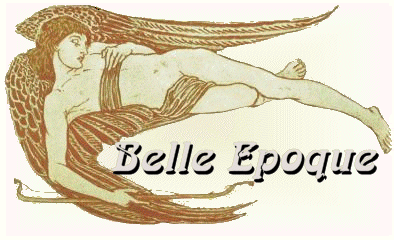The Belle Epoque in Europe
Belgium
Brussels
The economical crisis in Europe of 1884 was especially severe in Belgium, the condition of the working class more difficult and the population density higher than in the other countries of the continent. The liberal government overthrew in that year and with it disappeared the regime, which had ruled over Belgium since its independence in 1830. The Catholics established their government while the socialists began to organise themselves in mass movements - in 1885 the Belgian Labour Party was founded.
Paul Cauchie (1875-1952)
Cauchie House (1905)
5 avenue des Francs
© Le Cercle Guimard/Olivier Bost
In March 1886, in the area of Charleroi, revolts broke out which were put down by the army with a brutality never seen before. These events caused many young intellectuals to join the Labour Party, among them three lawyers, Jules Destrée, Emile Vandervelde and Max Hallet, who persuaded the party's executive committee to order the construction of the new Popular House (Maison du Peuple) from Victor Horta (1861-1947). Afterwards, Max Hallet asked Horta to design the plans for his residence in avenue Louise; together with the Antwerp socialist Camille Huysmans, Hallet played an important role in the foundation of the Brussels Institute for Decorative Arts in 1926.
Octave van Rysselberghe (1855-1929)/Henry van de Velde (1863-1957)
Hotel Otlet (1898)
Livornostraat 48
© Le Cercle Guimard/Olivier Bost
Paul Hankar (1859-1901)
Former shirt shop Niguet (1899)
13 rue Royale
© Le Cercle Guimard/Olivier Bost
So it happened that at the end of the XIXth century, the aesthetic ideas of the Belgian Labour Party were due to the friendship between the young intellectual leaders and the avant-garde artists. Since these artists were enthusiasts of the Art Nouveau, their socialist friends sided with this modern architecture style, like Louis Bertrand, deputy and mayor of Schaerbeek, who saw to it that most of the public buildings in his town were built in that style (e.g. he ordered the construction of all new schools from Henry Jacobs (1864-1935), a pupil of Horta).
Although one cannot qualify the Art Nouveau as the official socialist style, it is obvious that it was the Labour Party's preferred one: e.g. they commissioned some graphic works to Henry van de Velde (1863-1957) while the leading socialist Emile Vandervelde wrote articles in favour of the new style. Moreover, the social tensions of 1884 caused the emergence of a new type of man in the bourgeois elite: A new generation, inspired of the spirit of progress, took charge of the control of financial and commercial affairs, most of them being engineers who had participated in establishing the administration of the ancient colonies, like Van Eetvelde, Aubecq, Tassel and Solvay, and now becoming the most important customers of Horta - their houses are still to be admired in Brussels.

Victor Horta
(1861-1947)
Apartment and
studio of
the sculptor
Dubois (1901)
80 avenue Brugmann

Armand van Waesberghe
Gutenbergplantsoen 5
(1898)

"De Zonnebloem"
(ca. 1895-1903)
Miniemenstraat 40

Armand van Waesberghe
Gutenbergplantsoen 19
(1898)

Joseph Stevensstraat/
Emile Vanderveldeplein
(ca. 1900)

Victor Taelemans
80 Michel Angelolaan
(1899)
Besides - as André Pirard from Belgium told me - otherwise than in France, the Belgians usually did not call the new style Art Nouveau; in general it was called Modern Style.














